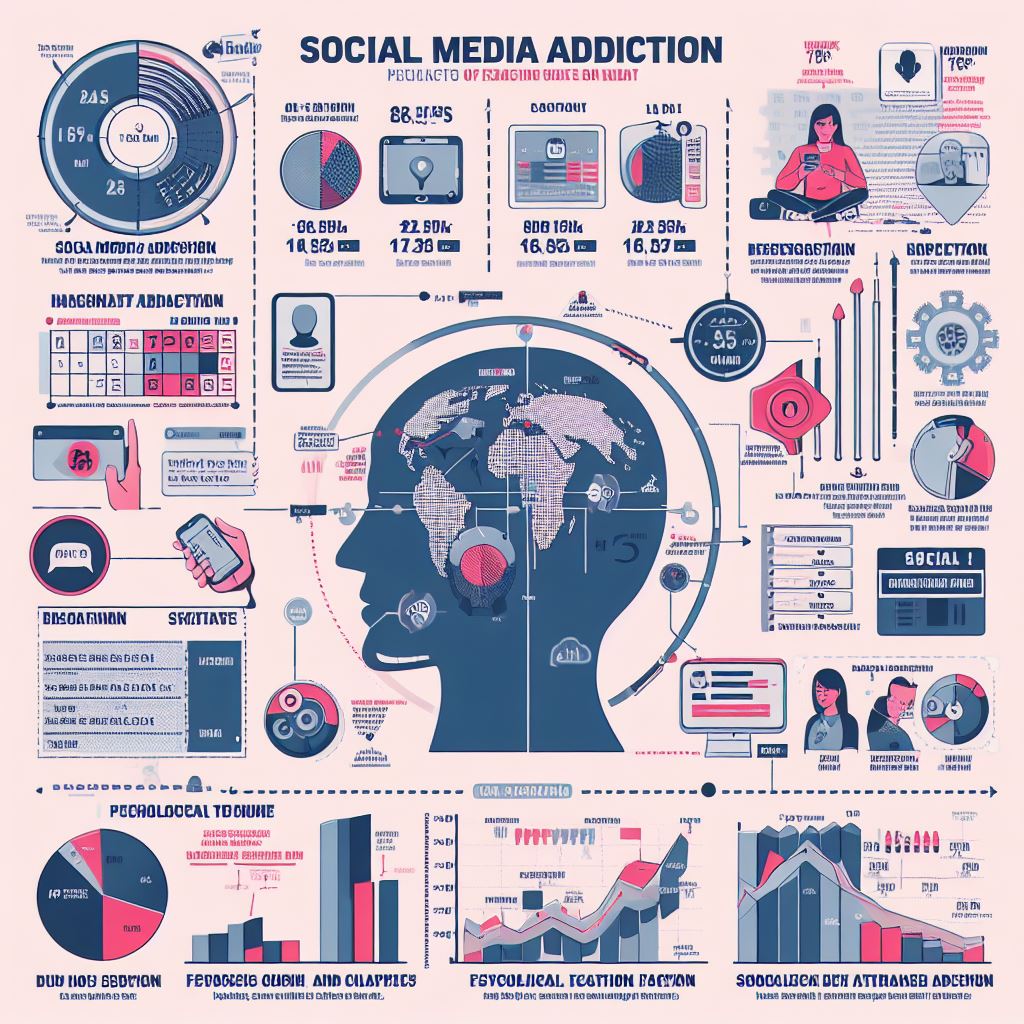Social Media Addiction and social media platforms have become an integral part of our daily lives in today’s hyper-connected world. From sharing life updates to staying informed about global events, these platforms offer numerous benefits. However, with the rise in their usage, concerns about social media addiction have also grown. Let’s delve into some eye-opening facts about this modern-day dilemma starting from how often people searching for answers
5 Shocking Facts About Social Media Addiction
1. The Dopamine Hit
Every time you receive a notification, your brain releases dopamine, the same chemical associated with pleasure from eating, gambling, and even drug use. This “digital drug” keeps users coming back for more, leading to addictive behaviours.
2. Teens at Risk
A staggering 50% of teens admit to feel addicted to their mobile devices. This early exposure and dependency can pave the way for more severe addictions in adulthood, highlighting the urgency of addressing the issue.
3. Sleep Sabotage
Over 60% of people admit to checking their social media accounts within 10 minutes before going to bed. This not only disrupts sleep patterns but also affects the quality of sleep, leading to a host of health issues.
4. FOMO is Real
The “Fear of Missing Out” isn’t just a trendy term. A whopping 56% of social media users suffer from FOMO, leading them to constantly check updates, further fueling the cycle of addiction.
5. Physical Health Decline
Excessive social media use is linked to sedentary lifestyles. With users spending an average of 2-3 hours daily on platforms, it’s no surprise that there’s a rise in obesity, cardiovascular issues, and other health concerns related to inactivity.

The Prevalence of Social Media Addiction
Recent studies suggest that a significant portion of social media users show signs of addiction. With the constant urge to check notifications, post updates, or scroll through feeds, many individuals find it challenging to disconnect, even for short periods.
Age Groups Most Affected
While social media addiction affects individuals across all age groups, teenagers and young adults are particularly vulnerable. The need for social validation, peer pressure, and the digital-native environment they’ve grown up in makes them more susceptible.
The Role of Dopamine
Just like gambling or shopping, receiving likes, comments, or shares on social media posts triggers the release of dopamine, a feel-good neurotransmitter. This reward system can lead to repeated behaviors, fostering addiction.
Time Spent on Social Media
On average, individuals spend over two hours daily on social media platforms. This duration can be significantly higher among heavy users, leading to reduced face-to-face social interactions and physical activity.
In Conclusion
While social media offers numerous benefits, it's essential to use it mindfully. Recognising the signs of addiction and taking proactive steps can ensure a balanced and healthy relationship with these digital platforms.
We hope you find this information useful and we are inviting you to find more shocking facts in our Blog



